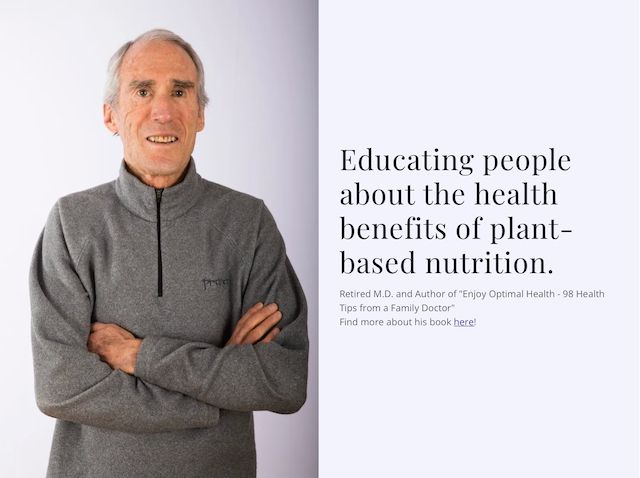Health column from August 19th 2022 by Dr. Greg Feinsinger. Champion of Whole Food Plant Based Living and righteous person.
More than two-thirds of Americans are overweight or obese, resulting in health problems such as diabetes, hypertension, cardiovascular disease, and cancer. Processed food is a major cause. Humans evolved over some 25 million years eating whole, unprocessed, plant food, which Dr. Michael Greger defines as “nothing bad added, nothing good taken away.”
Food companies care about their profits, not our health. They developed processed food decades ago to improve shelf life and to hook people on their products—so that they eat and buy more--by adding salt, sugar, and fat (usually in the form of added oil).
Examples of processed foods are white rice (as opposed to brown, red, or black rice), white pasta (as opposed to whole grain), and white flour tortillas. The history of processing natural, brown rice into white rice in nineteenth century Africa illustrates the harm done by removing something good from food. Vitamin B-containing bran was removed from the brown rice. As a result, many Africans who had been on a traditional, rice-based diet died from beriberi, a disease caused by vitamin-B deficiency. The scientist who figured out why these people were getting sick and dying won a Nobel prize, and subsequently white rice was fortified with vitamins. (Why weren’t the Africans simply advised to go back to eating unprocessed—brown--rice?).
Examples of bad things being added are preservatives, food coloring, salt, sugar, and added oil (fat). Years ago, food company scientists determined that salt, sugar, and fat are addictive—so these unhealthy ingredients are added to many products you’ll find in the grocery store.
Another problem with processing is that it often changes the molecular structure of food. Grains are subjected to intense heat, mechanical crushing, and sometimes “puffing” that change the structure of carbohydrate molecules, resulting in what is best called “food-like substances” rather than real food. These substances require little to no chewing, pass quickly through the stomach, and enter the bloodstream before reaching the part of our GI system that tells us we’re full. This scenario results in blood sugar spikes, which trigger the pancreas to make more insulin. Repeated spikes of blood sugar and insulin over weeks and years leads to diabetes and cardiovascular disease.
Examples of processed food in addition to those mentioned in the third paragraph are cakes; cookies; pastries; doughnuts; chips; pretzels, and other snack foods; most crackers (Wasa are an exception); cereal that comes in a box (particularly kids’ cereals); pizza crust; bagels; most buns and muffins; energy drinks and bars; soda; fruit juice; and ice cream. Juicing is processing and even green smoothies (75% greens and 25% fruit) should be ingested over 30 minutes to avoid sugar spikes. Anything made from flour is processed, including whole wheat flour. (Flour, including whole wheat flour, involves pulverizing grains into an unnatural and unhealthy form.
Processed food companies pay grocery stores to let them display their products in places where customers can’t miss them. And there is a lot of misleading information on bread wrappers and cereal boxes. So, it’s important to be an educated shopper and read food labels. First see what the serving size it. Ignore the percentage numbers on the right of the label, which are confusing and unhelpful. Instead, look at the numbers to the left of the label. Check the grams of sugar, keeping in mind that 4 grams is a teaspoonful. Check sodium (salt), keeping in mind that the recommended maximum is 1,500 mg. a day.
Then check the number for total carbs and below that the number for fiber. You want the ratio of total carbs:fiber to be 5:1 or less. So, multiply the fiber number by 5, and if the result is a number the same or greater than the number for total carbs, that product has lots of fiber and whole grains. Finally, check for added oil (if it’s towards the end of the list of ingredients remember the saying “don’t let perfect be the enemy of good enough).
A quote from author Michael Pollan (“The Omnivore’s Dilemma” and other books) will serve as a summary: “If it came from a plant, eat it. If it was made in a plant, don’t.”



